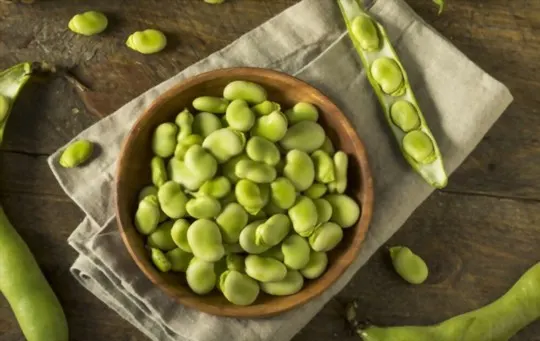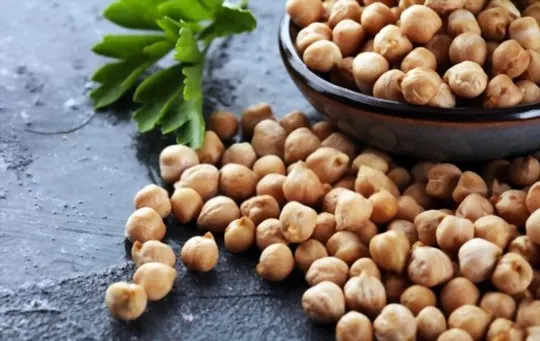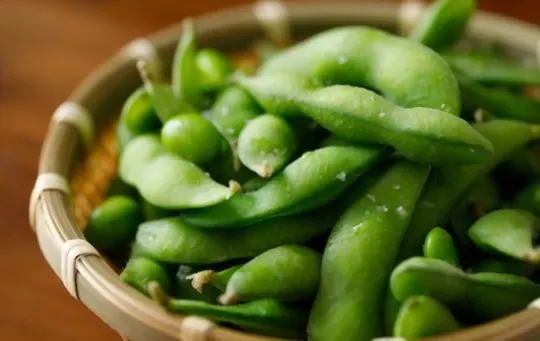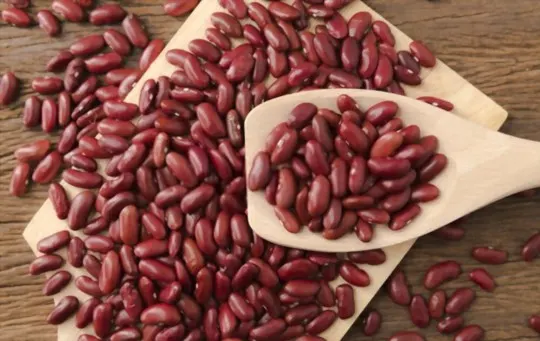Have you ever wondered how to cook lima beans? These beans are a delicious and nutritious to any meal, but they can be tricky to prepare.
There are a few different methods for cooking lima beans, and the best way depends on what you’re planning to use them for.
If you’re looking for a simple side dish, boiling or steaming is a good option.
However, baking or frying might be better if you’re looking to add some texture and flavor to a soup or stew.
And, of course, there are always canned lima beans if you’re short on time.
That being said, there are a few substitutes for lima beans that can be used in a pinch.
In this article, we’ll go over the five best substitutes for lima beans.
What is Lima Bean?

Lima beans are a type of legume that is native to South America.
The beans are named after the capital city of Lima, Peru, where they have been cultivated for centuries.
Lima beans are a staple food in many parts of South America and are also popular in the Caribbean and Central America.
Lima beans can be found in various colors, including white, brown, and red.
They are typically sold dried but can also be found frozen or canned.
Lima beans are a great source of protein and fiber and can be used in various recipes.
One popular way to cook lima beans is to simmer them in water or broth until they are soft.
Then, the beans can be mashed and used as a base for soups or stews.
Lima beans can also be boiled and served whole as a side dish.
For a more flavorful dish, lima beans can be cooked with onions, garlic, and spices.
The 5 Best Substitutes for Lima Beans
While lima beans are delicious and nutritious food, they may not be available in all areas.
Additionally, some people may be unable to eat lima beans due to dietary restrictions.
If you cannot find or eat lima beans, there are several good substitutes that can be used in their place.
1 – Fava Beans

Fava beans, also known as broad beans, are a type of legume popular in many parts of the world.
The beans are encased in large, leathery pods that can be up to a foot long.
The pods contain anywhere from one to eight beans, which are pale green and have a firm texture.
When cooked, fava beans have a nutty flavor that is often compared to that peas or lima beans.
They are an excellent source of protein, fiber, and vitamins A and C.
In addition to being eaten as a fresh vegetable, fava beans can also be dried and used in soups and stews.
2 – Great Northern Beans

Great northern beans are a type of white bean that is popular in many cuisines.
They are named for their country of origin, and they have a long history of being cultivated in the Americas.
Great northern beans are often used in soups and stews, as they have a mild flavor and a creamy texture.
They are also a good source of fiber and protein, making them a healthy addition to any diet.
In addition to being delicious, great northern beans are also versatile and easy to cook.
Whether you choose to use them in a hearty winter soup or a light summer salad, they are sure to add flavor and nutrition to any dish.
3 – Chickpeas

Chickpeas are a versatile and nutritious legume that has been enjoyed for centuries.
Also known as garbanzo beans, chickpeas are a staple ingredient in many cuisines worldwide.
They are an excellent source of protein and fiber and can be used in various dishes, from soups and stews to salads and veggie burgers.
Chickpeas are also popular for making vegan and gluten-free versions of traditional recipes.
Chickpeas can be used in place of Lima beans in most recipes and can be easily found in most grocery stores.
If you’re looking for a Lima bean substitute that is similar in texture and flavor, chickpeas are a good option.
When cooked, they have a creamy and slightly nutty taste that goes well with many different kinds of flavors.
4 – Edamame Beans

Edamame beans are a type of soybean that is popular in Asian cuisine.
Unlike other soybeans, edamame beans are harvested while they are still young and tender.
They can be eaten whole, or their pods can be opened to release the individual beans.
Edamame beans are a good source of protein, fiber, and vitamins, making them a healthy addition to any diet.
They can be steamed, boiled, or stir-fried and are often used as an ingredient in soups and vegetable dishes.
While they are available fresh or frozen, canned edamame beans are also a convenient option.
5 – Red Kidney Beans

Red kidney beans are a common type of bean (Phaseolus vulgaris).
They are named for their shape and color, which resembles a kidney.
Red kidney beans are popular in many Mexican, Indian, and Chinese cuisines.
They are often used in soups and stews, with a mild flavor and firm texture.
Red kidney beans are also a good source of protein, fiber, vitamins, and minerals.
In addition, they contain phytochemicals that may have health-promoting effects.
For example, red kidney beans contain quercetin, a type of flavonoid that has been shown to have anti-inflammatory and antioxidant properties.
Red kidney beans can be purchased dry or canned.
If using dry beans, they should be soaked in water for several hours before cooking.
Conclusion
In conclusion, a few different types of beans make excellent substitutes for lima beans.
These include fava beans, great northern beans, chickpeas, edamame beans, and red kidney beans.
Each of these options has a similar texture and taste to lima beans, making them ideal replacements in any recipe when it comes time to cook with beans, be sure to experiment with different types to find the perfect one for your dish.

The 5 Best Substitutes for Lima Beans
Ingredients
- Fava Beans
- Great Northern Beans
- Chickpeas
- Edamame Beans
- Red Kidney Beans
Instructions
- Choose your preferred substitute from the list of options.
- Organize all of your ingredients.
- Follow the substitution ratio to determine how much is required in your recipe.
